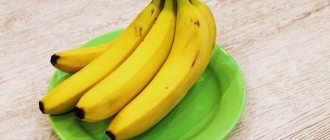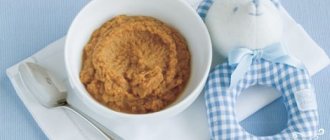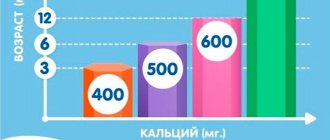03/30/2018 Category: LactationAuthor: Amalia Kukhtova
Stagnation of breast milk is quite common among nursing mothers. And it is very important to understand the main reason for its occurrence and get rid of it yourself at first. With lactostasis in the mammary gland, milk becomes clogged in the ducts, which must be filtered in a timely manner to avoid serious consequences (the development of mastitis). Lactostasis is accompanied by painful sensations in the area of compaction, increased temperature, and heaviness of the breast. The good news is that the problem can be dealt with at home.
- First aid for detecting milk stagnation
Procedure for preparing the breast before expressing - Breast massage
- Therapeutic compresses
- Video: breastfeeding and lactostasis
Video: pumping technique for lactostasis
- Recommendations for normalizing lactation:
Causes of lactostasis
A woman who intends to breastfeed her baby for a long period of time should be prepared for the possible appearance of congestion in the breast. Stagnation of breast milk can occur for a number of reasons:
- If the mother rarely puts the baby to the breast. In this case, milk accumulates in the ducts, forming a plug;
- The most problematic part of the breast is observed in the axillary area. To avoid stagnation in this area, a woman needs to choose a more optimal position when feeding, leaning a little forward, as if hanging over the baby. In this case, the ducts will be aligned, and the baby will receive milk from this lobe without any problems;
The upper outer square is the axillary area of the breast, where lumps most often form
- If a nursing mother has too much milk and the baby cannot cope with this amount. A woman should express the remainder to avoid stagnation;
- Abrupt refusal to breastfeed can cause stagnation of milk. To avoid it, it is necessary to reduce the number of feedings about a month before the expected days of completion of lactation;
- Wearing a small bra;
- If mom sleeps on her stomach. In this position, due to the load on the mammary glands, blockage of milk in the ducts may occur;
- It is very important for a woman to get enough sleep and be rested. Stressful situations, fatigue, lack of sleep can negatively affect the condition of the mammary glands.
If lactostasis is detected, it is imperative to consult a doctor for timely elimination and to prevent the development of mastitis (inflammation of the mammary glands).
How to apply cabbage leaf for lactostasis?
The main folk remedy for lactostasis is cabbage leaf. There are several recipes:
- In the evening, place a whole leaf of cabbage over the area with the seal, put a bra on top or wrap your chest with a bandage so that the leaf does not slip off, and leave until the morning. The next evening use a new sheet;
- Prepare the cabbage leaf as in option 1, but additionally grease it with a mixture of salt and oil. Replace several times a day;
- Knead the cabbage leaf thoroughly with your hands or a rolling pin or beat it off, you can make several superficial cuts so that the leaf releases juice, apply a compress to the sore spot, securing it with a bandage. Change every 3 hours.
Perhaps a cabbage leaf will help you, but perhaps not, if all your treatment consists only of cabbage leaves. Therefore, first of all, focus on the main measures for lactostasis: pumping, massage and phonation.
Honey compresses
Traditional medicine suggests treating stagnation of breast milk by using honey compresses. There are quite a lot of recipes for their preparation; there are several general rules that are recommended to be followed:
- honey should be natural and, preferably, May honey;
- use honey heated in a water bath at a temperature of approximately 40°C;
- Regardless of the preparation method, the applied compress is distributed on the skin, covered with cellophane and insulated with a scarf or handkerchief;
- the duration of action of the honey compress is 3 hours;
- a honey compress is not always convenient, because... honey leaks out and stains clothes.
- In essence, the variety of methods for honey compress is the variety of “fillings” for cellophane:
- cabbage leaf with honey for lactostasis - smear a cabbage leaf with honey and apply it to your chest. Or apply a clean sheet to pre-lubricated skin;
- Grind the cabbage leaf in a meat grinder or blender, mix with honey in a ratio of 5:1;
- honey cake for lactostasis - prepare the mixture using equal amounts of honey and flour (rye or wheat), form it into a cake and apply to the stagnant area;
Please note that there is no scientific justification for the use of this drug for the treatment of lactostasis and information about the proven effectiveness of its use. Therefore, the use of honey compresses can only be considered as an additional and not mandatory remedy.
Prevention or how to avoid lactostasis during breastfeeding.
In order to maintain normal milk flow throughout the entire feeding period and prevent lactostasis, you need to adhere to a lifestyle that eliminates all causes (conditions, situations) that could cause stagnation.
A list of reasons was given at the beginning of the article. It's worth using it. For example, if we know that “regulated” feeding can lead to incomplete emptying of the breast, it is better to refuse it. Let the baby suckle when he is hungry, and not strictly every 3-4 hours. Let one feeding take as much time as the child needs, and not the “legalized” 15 minutes that someone once allotted him for this. Modern science believes that this approach is more justified and useful for the growth and development of the baby than the desire for a rigid regime.
So, prevention of lactostasis during breastfeeding:
- Feeding “on demand” without time limit.
- Avoid feeding in the same position.
- Make sure your baby grasps the nipple correctly.
- Do not use scissor finger positions during feeding.
- If there is enough milk and there are no signs of stagnation, then do not express too often.
- Strictly follow the “order” of breasts, keep a record.
- When the time comes to wean your baby, do it gradually.
- Periodically conduct preventive courses using the Vitafon device. Phonation perfectly maintains the normal state of muscle cell tone in the breast tissue, the walls of the milk ducts and blood microvessels and prevents the retention of milk on the outflow paths.
- Don't let your chest get cold. This is a very well-known rule among the people. Take all measures to avoid getting a chest cold.
- Give up the habit of sleeping on your stomach.
- Provide yourself with loose, comfortable clothing that does not restrict your chest.
During the period of breastfeeding, psycho-emotional stress, lack of sleep, and increased physical activity become an integral part of your life. And they are the real conditions for lactostasis. Let your loved ones do everything to save you from the influence of this negative triad: help, take on some of the worries, give you additional time for sleep and rest.
Conclusion
In conclusion, here are some basic recommendations for mothers who breastfeed their baby.
- Carefully analyze your lifestyle and immediately eliminate from it all potential causes of milk stagnation during breastfeeding. Carry out preventive procedures with the Vitafon device, preventing not only lactostasis, but also increasing the overall immunity of the body.
- If lactostasis does develop, do not delay taking measures to combat it: do not stop feeding, use the Vitafon device, express and massage the mammary gland (breast).
- In difficult cases, do not forget about professional medical help.
Main! Make every effort to continue breastfeeding your baby. This way you will create the best conditions for maintaining his health, successful growth and development.
FAQ:
Will a camphor oil compress help?
Answer: camphor oil for external use is a 10% solution of camphor in sunflower oil. It is used for rubbing for muscle pain, arthritis, rheumatism, etc. Camphor oil has no indications for use in lactostasis, but it is known that camphor interferes with the production of breast milk. In addition, this oil has a characteristic pungent odor, due to which the baby may simply refuse to breastfeed, while feeding cannot be interrupted during treatment.
Can I use an alcohol compress?
Answer: no. Alcohol inhibits the formation of oxytocin, which in the body of a nursing mother stimulates the outflow of milk. We also must not forget that alcohol can get into the milk, and therefore into the child’s body.
Is magnesium compress allowed?
It is not recommended to use a magnesium compress for lactostasis, since there is no information about the proven effectiveness of its use. At the same time, magnesium sulfate (magnesia) is contraindicated for breastfeeding when taken orally; there is always a possibility that the drug may enter the baby’s body during breastfeeding.
Will a bath help with lactostasis?
Answer: a bath is an intense thermal effect, both local (on the chest) and general (on the entire body). With local heat applied to the breast, the milk ducts expand and when expressing (right there, in the bath), the outflow of milk is facilitated. However, trying pumping in a bathhouse is permissible only if no more than 2 days have passed since the onset of signs of milk stagnation in a nursing mother and lactostasis occurs without fever. But even if you go to the bathhouse on the first “allowed” two days and you do not have a fever, you should always remember that the bathing procedure can be complicated by uncontrolled milk secretion, which will be very difficult to stop.
Is it possible to make compresses for lactostasis and fever in a nursing woman?
Answer: no. Compresses for lactostasis have warming properties; you can do them yourself 1-2 days from the beginning and only in the absence of fever.
Is it possible to use dimexide for lactostasis?
The only answer can be unequivocal - no. A drug such as dimexide is prohibited in pediatric practice due to its toxicity. Treatment with dimexide for lactostasis of the skin of the breast in a nursing mother leads to the entry of this substance into the child’s body and the implementation of its toxic effects.
How long does lactostasis last?
The duration ranges from one day to a week, then there is a possibility of lactostasis turning into serous mastitis.
Is no-spa used for lactostasis?
Indeed, no-shpa is sometimes used for milk stagnation, but it must be borne in mind that due to the lack of necessary clinical studies on the use of this drug during lactation, the use of no-shpa is not recommended.
How to break milk stagnation?
With lactostasis, in no case should you take any actions that could be characterized as hitting or breaking, as you can damage the mammary glands and greatly aggravate the situation. Only gentle massage and careful pumping are used.
I can’t express the stagnation of milk!
In response to this cry for help, a doctor must come. And before his arrival, you need to calm down and once again, after reading this article, make efforts, including with the help of your loved ones, to massage the breasts, pump, feed the baby and use phonation.
List of used literature:
- Ailamazyan E.K. Obstetrics: textbook. – Moscow State Medical University named after. THEM. Sechenov. – 9th edition, revised and expanded – Moscow: GOETAR-Media. – 2015
- Kildiyarova R.R. Nutrition for a healthy child. – 2nd edition, corrected and expanded – Moscow: GOETAR-Media. – 2015
- Kildiyarova R.R., Kolesnikova M.B. Pediatrician's Directory. – 3rd edition, corrected and expanded – Moscow: GOETAR-Media. – 2015
- Komarova T.A., Tulendiev T.V. A textbook of traditional medicine – Alma-Ata Publishing House: Kainar. – 1991
- Horse I.Ya. Nutrition for pregnant women, nursing mothers and young children. – Publishing house Medical Information Agency (MIA). – 2015
- Kostenko A. Smart herbs for your health. – AST Publishing House. – 2015
- Nikitin B.P. A healthy childhood without drugs or vaccinations. 6th edition, corrected and expanded - Publisher: List New Year. – 2001
- Pediatrics: national guidelines. – Moscow: GOETAR-Media, 2009
- Pediatrics - a textbook for medical universities / Edited by N.P. Shabalova. - Saint Petersburg. – 2003
- Pervushina E.N. Forest pharmacy. Medicinal plants. – Amphora Publishing House. – 2015
- Radzinsky V.E. Gynecology: textbook. – GOETAR-Media. – 2015
- Yakovlev Ya.Ya., Manerov F.K. Lactostasis and lactation mastitis in pediatric practice // Siberian Medical Review. – 2015 – No. 2 (92) – pp. 32-41.
- Feedback from the Research Institute of Obstetrics and Gynecology named after. BEFORE. OTTA dated December 16, 1997 No. 218 on the use of the Vitafon vibroacoustic device in the treatment of lactostasis and serous mastitis.
Author of the article: Candidate of Medical Sciences, doctor of clinical laboratory diagnostics Ionicheva L.V. (Penza)
You can ask questions (below) on the topic of the article and we will try to answer them competently!
First aid when detecting milk stagnation
If you detect hard formations in the breast, it is important to provide yourself with first aid in a timely manner to avoid the development of mastitis. The best method is to put the baby to the breast every hour . But if this is not possible, the breast should be emptied independently, and best of all manually, since you can feel all areas of the mammary gland with your hand, unlike a breast pump.
Breast preparation before pumping
Compress for the chest
Before the emptying procedure, you need to warm up the chest a little. First, you should take a warm shower and direct streams of water onto the mammary gland in a clockwise direction. Or you can apply a warm compress for a while. It is important to remember that heating the breasts during mastitis and high temperature is prohibited, otherwise such actions can only aggravate the situation.
Breast massage
Breast massage helps stimulate milk flow.
After warming up the breasts, you need to start massaging. If a nursing mother massages her breasts regularly, she will be able to avoid problems with congestion.
Tips for performing a massage:
- Before starting the procedure, you should take a comfortable position. The best position is the one in which the woman is feeding the baby;
- Express a few drops of milk and lubricate the nipple to moisten it;
- It is not recommended to use oil, as its remnants can get into the baby’s mouth or into the milk when expressing and thereby provoke an allergic reaction. If your skin is too dry, you can use hypoallergenic natural oil;
- When performing a massage, do not try to knead the seals. In this way, you can provoke new congestions and injure the milk passage, which can lead to inflammation of the mammary gland. Your task is to soften the breasts before pumping and increase blood circulation in areas of compaction;
- Use your hand to feel your entire breast. In areas of hardening, use your fingertips to massage clockwise towards the nipple;
- Movements should be careful, without pressure;
- The duration of the massage for each breast is 3–5 minutes.
Breast massage for lactostasis
Breast massage is simple. First of all, pay attention to the fact that the gland tissue should be of the same density. If you feel areas of compaction, then it is in these places that the massage should be more intense.
E. O. Komarovsky, pediatrician
https://www.komarovskiy.net/knigi/otdelno-o-zhenskoj-grudi.html
Therapeutic compresses
Cabbage leaf compress
Cabbage leaves and cold water are effective methods for relieving swelling. Apply a cool compress or cabbage leaf after expressing milk. The juice of cabbage leaves contains useful components, such as plant fiber, phosphorus, calcium, sulfur, etc. Thanks to its antiseptic properties, cabbage leaves heal cracked nipples. Before applying it, you need to lightly mash it to release the juice and apply it to the painful part of the chest.
However, you should not self-medicate. It is important to consult a doctor in time to prescribe individual treatment. Cabbage leaf can only serve as a means to relieve swelling.
Help from a specialist in the treatment of lactostasis
Medical Assistance 24 provides specialists for the treatment of lactostasis at home. Our staff has extensive experience and positive recommendations, so they can easily turn feeding into a pleasant experience, making the mother forget about stress and possible complications such as mastitis.
Medical assistance at home only from EXPERIENCED doctors!
If you have discomfort in your chest and it becomes painful to feed your baby, this is a reason to contact us. Don’t put it off until later, because a team with a visiting nurse will arrive very quickly! To clarify the cost of the service, look at the price list or contact the hotline.
Feeding and pumping
Feeding with lactostasis
Milk can accumulate in different parts of the breast. If a woman is breastfeeding, it is necessary to palpate the areas of compaction and choose the optimal position for their resorption. The baby's chin works more actively when sucking, so the mother should place the baby so that the chin points exactly to the place of the seal. Remaining milk after feeding should be expressed to avoid re-hardening of the mammary glands.
If the child has completed the task, the breast should become soft, but soreness and redness may go away a little later. It is necessary to attach the child every hour to avoid repeated congestion.
If a woman does not have the opportunity to put her baby to her breast, then she must manually express the milk herself.
Video: breastfeeding and lactostasis
How to strain milk stagnation at home
- Rinse your breasts with warm water. If you have cracked nipples, it is not recommended to wash them with soap before each pumping. Once a day is enough;
- Prepare a container for milk. Sterilize in boiling water and cool in air. Do not wipe with a towel, as lint may remain;
- Take a comfortable position so that your muscles are not tense;
- Place your thumb over the nipple and the rest under the nipple, forming a "C". At the same time, rhythmically press on the areola, deep into the mammary gland. At first the milk will flow out in drops and then in trickles;
- Change the position of your fingers, twist around the nipple, so that each lobe of the breast is involved in pumping;
- Run your fingers from the base of the breast to the areola;
- At the same time, you can perform a light massage using patting movements;
- Alternate massage and pumping;
- Getting rid of seals is a rather lengthy process that can take from 30 minutes to one hour;
- At the same time, after emptying your breast, try letting your baby suck to produce oxytocin. This will speed up milk release;
- Continue pumping until the lumps in your breasts disappear.
Video: pumping technique for lactostasis
Prevention of milk stagnation in a woman’s breast
It is easier to prevent any illness than to subsequently treat it. Therefore, follow simple rules and recommendations and you will not know what stagnation of milk in a woman’s breast is. We recommend following the following rules:
It is worth remembering that it is important for a woman to express her breasts in a timely manner, at the first signs of stagnation.
Sign up for breast pumping
Make an appointment
Nutrition for lactostasis
Nutritious nutrition for a nursing mother is the key to health for her and her baby.
There are a lot of myths roaming the Internet about what you can and cannot eat during stagnation. Some believe that a diet is necessary and you need to drink less liquid, while others insist that you cannot deny yourself anything. In fact, there should be no food restrictions, but there are some foods that can cause an allergic reaction in a baby when fed (chocolate, honey, eggs, peanuts). In this case, the woman herself makes the decision to limit herself to these products or not.











